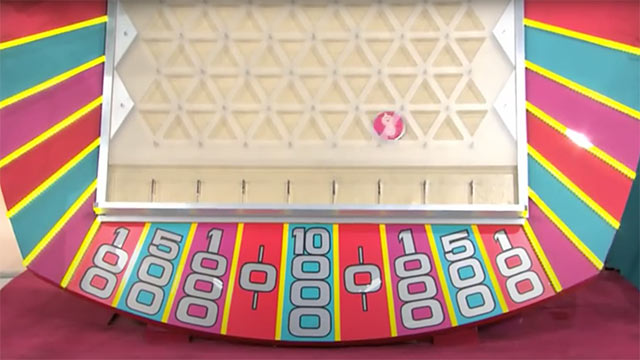By now, most people know that polling data is steeped in uncertainty. But fully grasping that uncertainty remains difficult.
To help visualize how uncertainty affects polling data, Northwestern University computer scientist Matthew Kay has turned to an old-fashioned game: Plinko.

In the popular daytime game show “The Price Is Right,” contestants drop a “Plinko chip” down a board filled with pegs. Deflected by the pegs, the chip bounces around the board, making it difficult to predict where it might land. In the show, the game offers a chance for contestants to win money and prizes. In Kay’s version, however, the falling Plinko chips represent how election results can swing one way or the other.
“Internalizing uncertainty is really hard,” Kay said. “Using similar uncertainty as in the election forecasts, ‘Presidential Plinko’ shows just how uncertain predictors’ forecasts are.”
Kay is an assistant professor of computer science in Northwestern’s McCormick School of Engineering and co-director of the Midwest Uncertainty Collective.
Kay was inspired to develop Presidential Plinko after watching The New York Times’ “Election Needle.” Following real-time polling data, the perpetually jittering “Needle” forecasts election outcomes.

“The Election Needle was supposed to communicate uncertainty, but people didn’t make that connection,” Kay said. “Instead, it just made people anxious. I wondered what else could communicate uncertainty or randomness.”
Kay settled on Presidential Plinko, which he fuels with polling data from FiveThirtyEight and The Economist. The height of each Plinko board is based on the uncertainty of the forecast. The taller the board, the more uncertain the forecaster is.
Each chip represents one possible outcome of the 2020 U.S. presidential election. Viewers can watch one chip fall at a time or drop all chips at once. Although the falling chips seem random, the final distribution matches the forecasters’ predictions.
Although Presidential Plinko might make viewers less anxious than the jittering Election Needle, Kay believes his visualization will still make people “appropriately anxious,” which he doesn’t think is necessarily a bad thing.
“When people are uncertain about something they care about, they should be anxious,” he said. “If people feel anxious about the election, then maybe it will encourage them to vote.”


